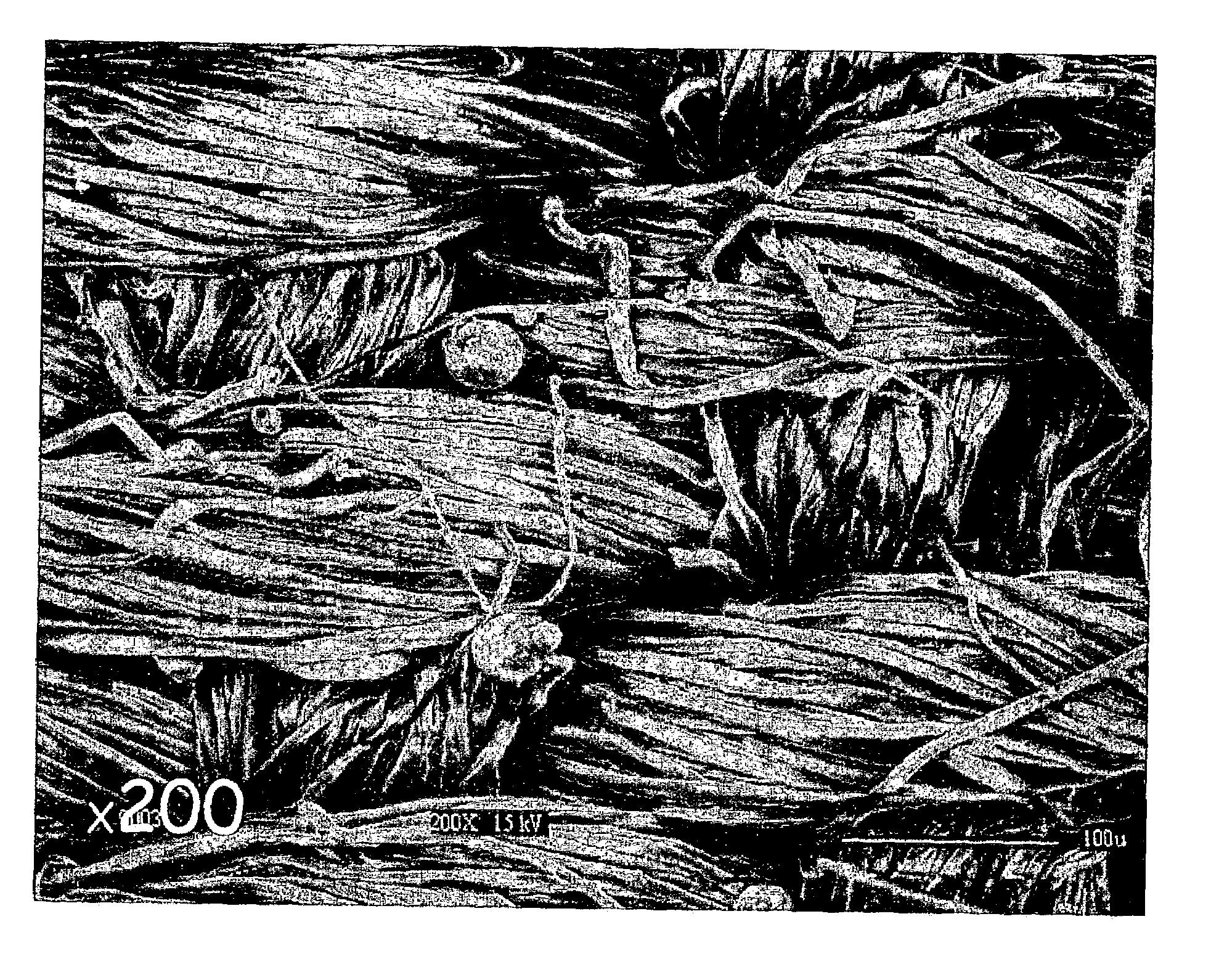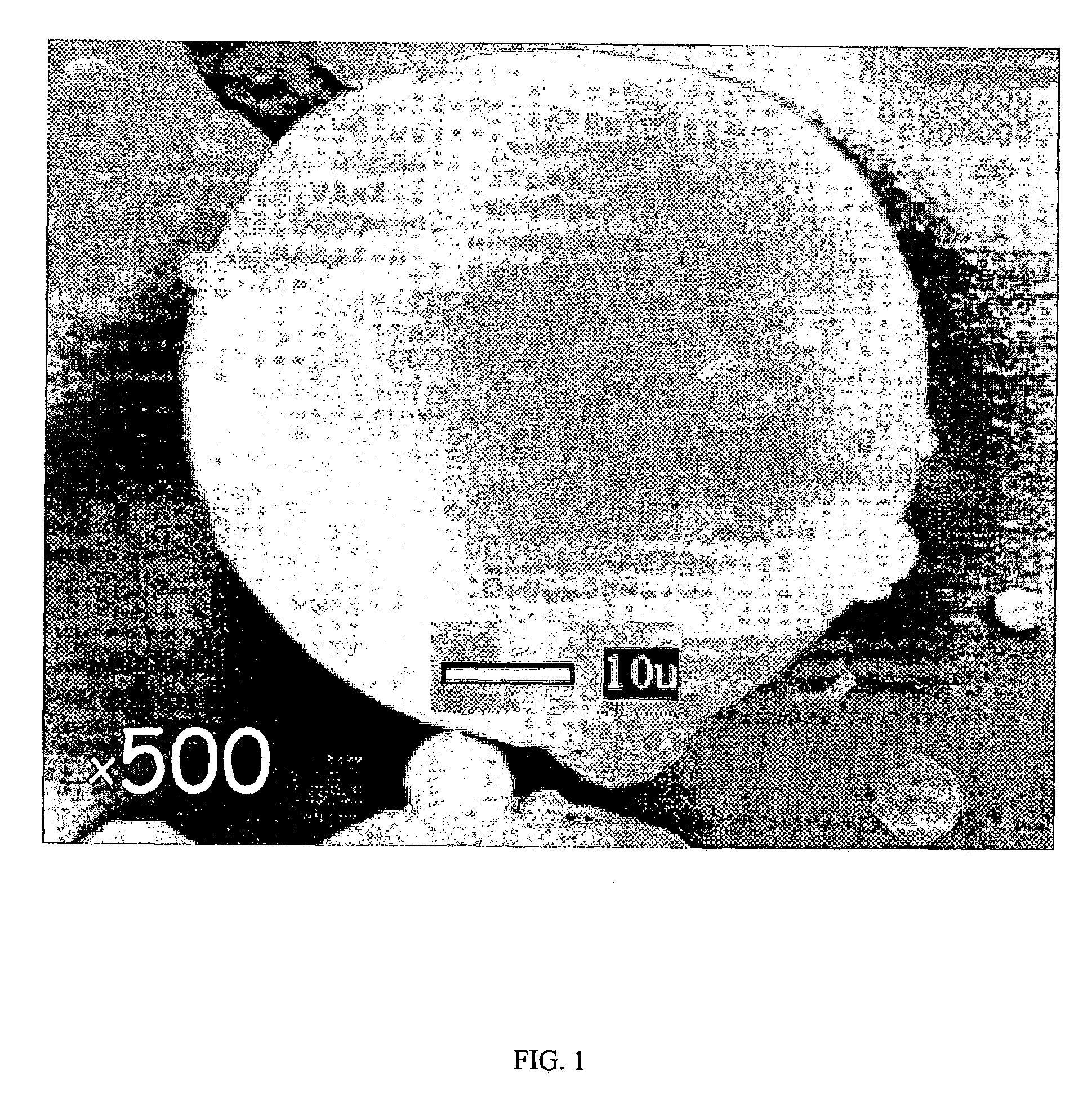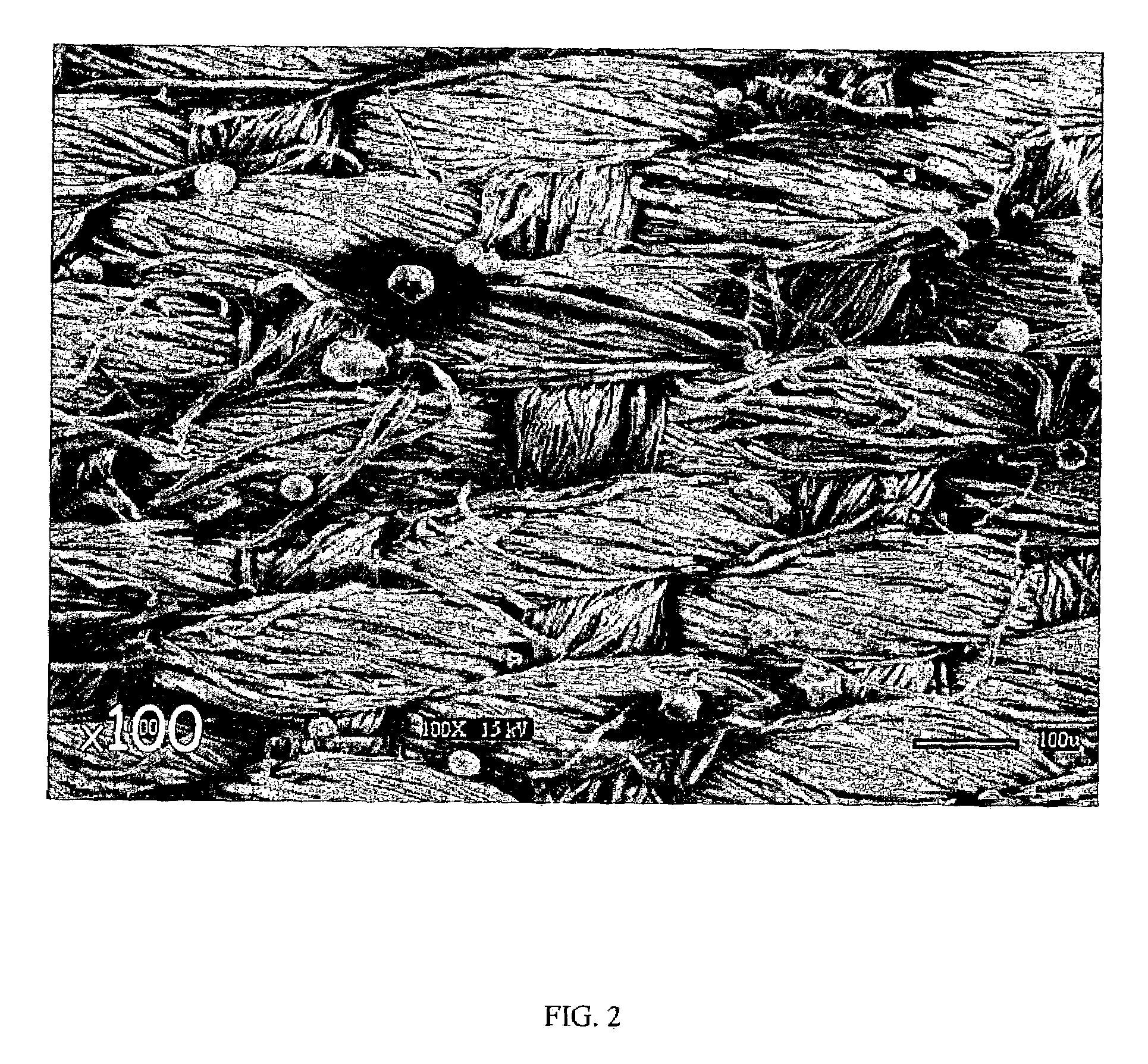Controlled delivery system for fabric care products
a fabric care product and carrier technology, applied in detergent compositions, detergent powders/flakes/sheets, detergent compounding agents, etc., can solve the problems of large fraction of fragrance loss, large amount of fragrance loss during drying process, and limited fragrance creation of fabric care products, etc., to achieve high impact and improve fragrance deposition
- Summary
- Abstract
- Description
- Claims
- Application Information
AI Technical Summary
Benefits of technology
Problems solved by technology
Method used
Image
Examples
example 1
[0103]The fragrance used in the following examples is a fragrance composition that is not substantive on fabric when used as neat oil. The fragrance composition used is as follows:
[0104]
Perfume CompositionComponent (% Wt.)Geraniol30.0Dihydro Myrcenol20.0Phenyl Ethyl Alcohol 5.0Linalool25.0Tetrahydro Linalyl Acetate20.0
[0105]Fragrance carrier particles were formed having the following compostion;[0106]40% Hydrophobic polymer of polyethylene homopolymer, commercially available from AlliedSignal Inc. as PERFORMALENE™ PL[0107]29% Cationic fabric conditioning agent of methyl bis(hydrogenated ditallowamidoethyl)2hydroxyethyl ammonium chloride, commercially available from Croda Inc. as INCROSOFT 100[0108]1% Cationic charge booster of polyethyleneimine having an average molecular weight of 1800, commercially available from BASF Corporation as LUPASOL™ PR815[0109]30% Fragrance.
[0110]The hydrophobic polymer, cationic fabric conditioning agent, and cationic charge booster were melted together ...
example 2
[0111]Fragrance carrier particles were formed having the following compostion;[0112]40% Hydrophobic copolymer of a silicon copolymer modified candelilla wax commercially available from Strahl & Pitsch Inc.[0113]29% Cationic fabric conditioning agent of methyl bis(hydrogenated ditallowamidoethyl)2hydroxyethyl ammonium chloride, commercially available from Croda Inc. as INCROSOFT 100[0114]1% Cationic charge booster of polyethyleneimine having an average molecular weight of 1800, commercially available from BASF Corporation as LUPASOL™ PR815[0115]30% Fragrance
[0116]The hydrophobic polymer, cationic fabric conditioning agent, and cationic charge booster were melted together to form a clear solution at 90 degrees C. The fragrance was added to the molten mixture while mixing it with a propeller mixer. This molten solution is atomized into a chamber with ambient temperature air passing through the chamber. The atomized droplets freeze into solid particles in the size range of about 20 micr...
example 3
[0117]Fragrance carrier particles were formed having the following compostion;[0118]40% Hydrophobic polymer of ethylene acrylic acid copolymer, commercially available from AlliedSignal Inc. as ETHYLENE-ACRILIC ACID COPOLYMERS A-C® 540,[0119]29% Cationic fabric conditioning agent of methyl bis(hydrogenated tallow amidoethyl)-2-hydroxyethyl ammonium methyl sulfate, commercially available from the Stepan Company as ACCOSOFT™ 440-75 DEG[0120]1% Cationic charge booster of polyethyleneimine having an average molecular weight of 1800, commercially available from BASF Corporation as LUPASOL™ PR815[0121]30% Geraniol
[0122]The hydrophobic polymer, cationic fabric conditioning agent, and cationic charge booster were melted together to form a clear solution at 90 degrees C. The fragrance was added to the molten mixture while mixing it with a propeller mixer. This molten solution is atomized into a chamber with ambient temperature air passing through the chamber. The atomized droplets freeze into...
PUM
| Property | Measurement | Unit |
|---|---|---|
| average particle diameter | aaaaa | aaaaa |
| particle diameter | aaaaa | aaaaa |
| time | aaaaa | aaaaa |
Abstract
Description
Claims
Application Information
 Login to View More
Login to View More - R&D
- Intellectual Property
- Life Sciences
- Materials
- Tech Scout
- Unparalleled Data Quality
- Higher Quality Content
- 60% Fewer Hallucinations
Browse by: Latest US Patents, China's latest patents, Technical Efficacy Thesaurus, Application Domain, Technology Topic, Popular Technical Reports.
© 2025 PatSnap. All rights reserved.Legal|Privacy policy|Modern Slavery Act Transparency Statement|Sitemap|About US| Contact US: help@patsnap.com



